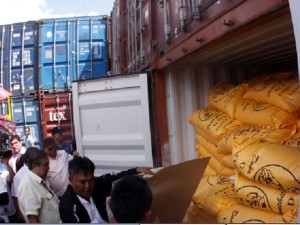Rice consumption outpacing harvest

CDN FILE PHOTO
LUCENA CITY—With the country’s growing population, the government’s rice self-sufficiency program is facing a greater challenge, according to experts.
How it affects the ordinary Filipino could be gleaned from the case of Rolando Mercader, a tricycle driver here.
Mercader has two children and his wife is pregnant with a third child.
With the spiraling cost of fish, meat and vegetables brought by oil price increases, the driver, who earns an average of P200 on a lucky day, said they often resort to consuming more rice to avoid hunger pangs.
“As long as there is enough rice with a dash of salt or soy sauce, we would be all right. It would take some time before we would feel hungry again,” he said with a laugh.
Article continues after this advertisementAccording to the International Rice Research Institute (Irri), one of the major challenges of the Philippines is how to keep up with a rapidly growing population that also consumed more rice in the last decade.
Article continues after this advertisement“The population of the Philippines is estimated at 97 million. Its annual growth rate of around 2 percent—among the world’s highest—means that just to keep pace with growing demand the country would have to increase rice production and yield at rates rarely seen in history,” the Irri said in a statement on its website.
According to the National Statistics Office, the total population of the Philippines as of May 1, 2010, is 92,337,852 based on the 2010 Census of Population and Housing.
The 2010 population is higher by 15.83 million than the 2000 population of 76.51 million. In 1990, the total population was 60.70 million.
The Philippine population increased at a rate of 1.90 percent annually from 2000-2010. This means that two persons are added per year for every 100 persons in the population, the NSO record said.
Mercader’s situation is reflected in the study conducted by the Southeast Asian Regional Center (Searca) for Graduate Study and Research, commissioned by the Philippine Rice Research Institute.
The Searca study found that while rice consumption has declined in most other Asian countries, per capita consumption in the Philippines rose to 13 percent, from 106 kilograms in 2000 to 119 kg in 2009.
The study also noted that as the income of a Filipino family rises, its members consume less rice in favor of other foods which they could readily avail of.
But for those in the lower-income bracket, particularly those in rural areas, rice continues to be the main staple even without viands.
Agriculture Secretary Proceso Alcala estimated that for 2013, “because of good weather condition,” the country can produce 13.03 million metric tons (MT) of milled rice, exceeding the domestic demand of 11.23 million MT.
The problem is whether this could be sustained in the coming years given the Philippines’ increasing rice consumption, said experts.